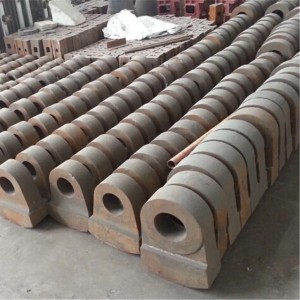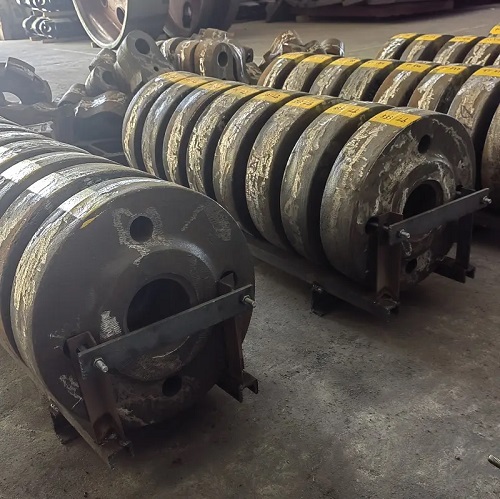The hammer crusher is a kind of crushing equipment widely used in industries such as mining, metallurgy, building materials, highways, railways, water conservancy and chemical engineering. Its working principle is to use a high-speed rotating hammer head to impact and crush the materials, thereby achieving coarse crushing, medium crushing or fine crushing of the materials. As the core component of the hammer crusher, the service life of the hammer head directly affects the working efficiency and production cost of the crusher. Therefore, understanding the service life of the hammer head and how to replace it reasonably is of great significance for improving the working efficiency of the crusher and reducing production costs.
First, the function of the hammer head and the reasons for its wear
The hammer head is the working component of the hammer crusher, usually made of high-strength alloy materials, featuring wear resistance and impact resistance. Its main function is to generate an impact force through the rotating rotor, which impacts the material from the inner wall of the rotation to the wall of the crushing chamber, thereby achieving the crushing of the material. However, as the hammer head keeps running and working, it will be affected by the impact and wear from the materials, resulting in phenomena such as surface wear, deformation and fracture of the hammer head. The normal wear of the hammer head is an inevitable phenomenon during the operation of the hammer crusher.
Second, the service life of the hammer head
The hammer head is a key component in a hammer crusher that plays a role in impact and crushing, and is generally made of high-strength alloy materials. The service life of the hammer head is influenced by multiple factors, including the hardness of the material, the working conditions of the crusher, and the material of the hammer head. Under normal circumstances, the service life of a hammer head ranges from several months to one year.
Third, how to replace the hammer head reasonably
1. Regular inspection: The operator should regularly check the wear of the hammer head. If severe wear is found, it should be replaced in time. During the inspection, the degree of wear of the hammer head can be judged by observing whether there are obvious wear marks on the surface of the hammer head and whether the gap between the hammer head and the hammer handle has increased.
2. Select the appropriate hammer head: When replacing the hammer head, the suitable material and model of the hammer head should be selected based on factors such as the hardness of the material and the crushing ratio. Generally speaking, hammer heads made of wear-resistant materials such as high-chromium cast iron and high-manganese steel have a longer service life and are suitable for materials with higher hardness. Hammer heads made of materials such as low alloy steel and common carbon steel have a relatively short service life and are suitable for materials with lower hardness.
3. Install the hammer head: When installing the hammer head, ensure that the connection between the hammer head and the hammer handle is firm to prevent it from falling off during use. At the same time, it is necessary to ensure a good fit between the hammer head and other components of the crusher to avoid wear and damage caused by improper fit.
4. Rational use of the crusher: During the operation of the crusher, the operating procedures should be followed to avoid overloading and long-term continuous operation. Overload operation will lead to accelerated wear of the hammer head and shortened service life. Long-term continuous operation will cause the temperature of each component of the crusher to rise, accelerating wear. Therefore, the rational use of the crusher is conducive to prolonging the service life of the hammer head.
Post time: Jun-24-2025


